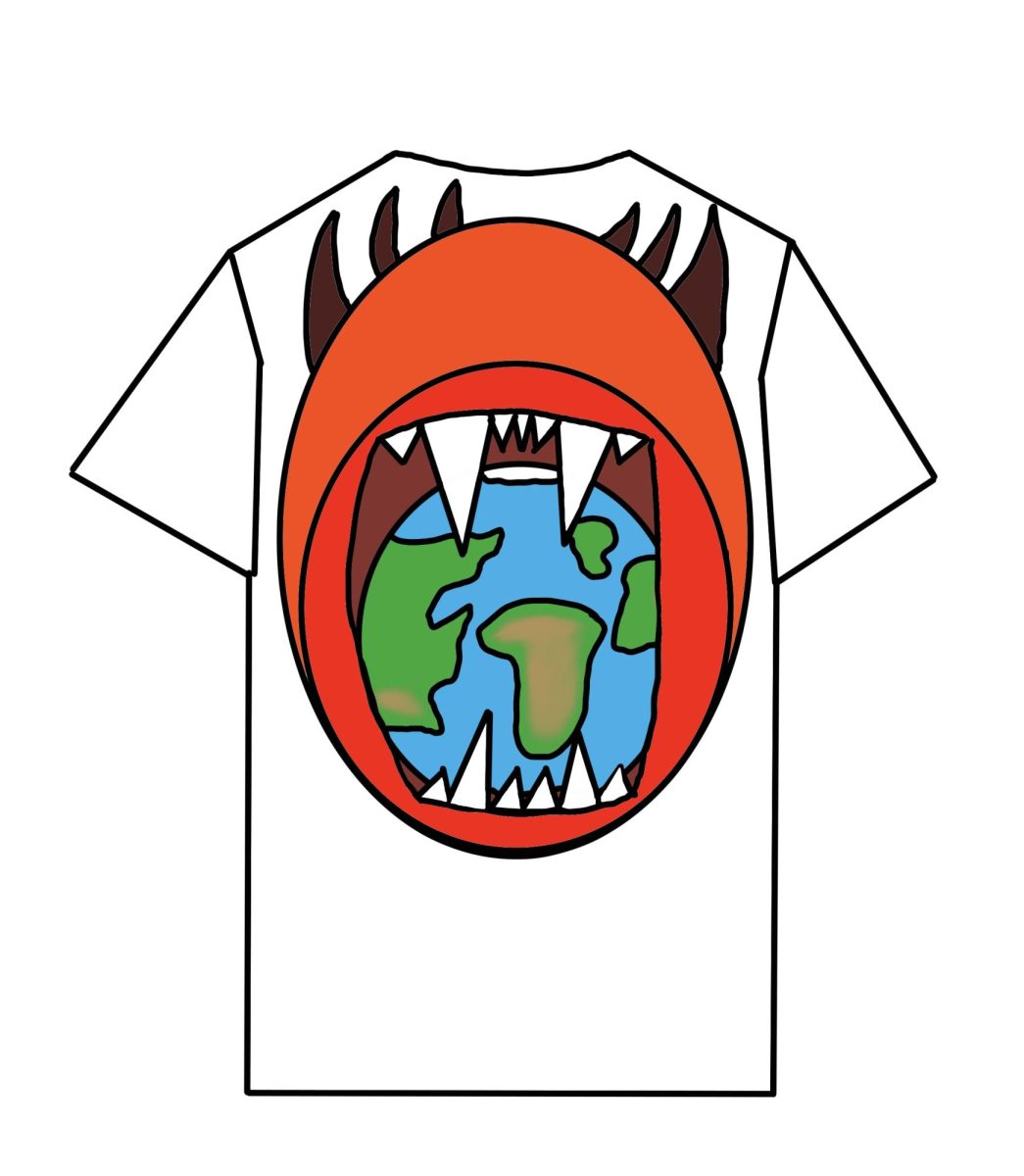Do you have a pile of random t-shirts in your room that you never wear? Have you ever wondered what happens when you toss them into the Goodwill donation bin? The series of environmental impacts that begin at the manufacturing of the shirt are alarming.
Just to manufacture a t-shirt takes a significant toll on the environment. T-shirts are made mainly out of cotton and require high amounts of water and pesticides. According to the World Wildlife Fund, approximately 2,700 liters of water are used to produce the cotton for just one shirt. In a world facing depleted water sources, this is an extreme waste. Cotton farming requires pesticide use which pollutes the surrounding soil. These cotton shirts are then dyed with chemicals that contaminate water sources and have adverse effects on wildlife. It is clear that the mere production of t-shirts has shockingly negative effects on the environment.
From the cotton origin growth site, to various manufacturers, to sale sites, t-shirts travel a long way around the world. According to Fast Company, an average t-shirt travels about 40,000 miles and its journey generates about 103 grams of carbon dioxide. These carbon dioxide emissions negatively alter our environment by increasing temperatures, disrupting ecosystems, and acidifying the oceans. Unfortunately, many are unaware of this tragedy, as companies are unsurprisingly secretive about the amount of carbon dioxide their products produce.
“This ability to ‘hide’ emissions in complex global-production processes has been called a ‘carbon loophole,’ or carbon colonialism, as it allows major importing economies to move carbon-intensive production processes out of their headline domestic emissions statistics,” says Fast Company.
Such loopholes allow companies to conceal these unsustainable tactics from customers. Knowledge of extreme carbon dioxide emissions from shipping may deter consumers, but this calculated ploy encourages companies to continue harming the environment and keeps consumers blissfully unaware.
In this age of modern consumerism, t-shirts can be found practically anywhere. They are sprinkled out at the Thanksgiving Turkey Trot, team playoffs, family trips to Disney World- the list is endless. But what happens after the shirt is worn a few times and it finds itself in an endless pile at a donation store?
Many of the t-shirts finding themselves in donation centers are of poor quality and in terrible shape. It shouldn’t be too surprising that no one is buying the shirt you ran a marathon in with a bunch of holes in it. These unsellable clothing pieces leave donation centers and lead to more environmental impacts.
Many of the t-shirts, along with other kinds of unsellable clothing items, enter landfills, where they spend the next few months rotting away.
“The decomposition process of textiles generates greenhouse methane gases and releases toxic chemicals and dyes into the groundwater and our soil,” says The Slow Label.
Even at the end of a t-shirt’s life, it is harming the earth, and therefore, surrounding ecosystems and resources.
T-shirts that can’t be sold in second hand shops and that don’t end up in landfills are shipped off to communities in less third-world countries. Sending used clothing to people in need is seen as a charitable act, but it actually harms the economy of these countries.
“More than 300 million dollars worth of secondhand clothing heads to countries including Chile, Guatemala, India, the United Arab Emirates, Mexico, Tanzania, Honduras, Angola, and the Dominican Republic. An additional 275 million dollars ends up [in other countries],” says Re/make World, with data from a U.N. database.
This excessive influx of used clothing, however, decreases sales of local merchants and textile industries, placing further financial burdens on the poorer community. It leads to local clothing crafters out of business, causing a loss of culture. In these third-world country communities that turn to their cultural heritage for guidance through hardships, it is unacceptable for modern consumerism to strip away their traditional way to dress.
It is clear that the manufacturing, distribution, short-lived use, and disposal of t-shirts has extremely severe consequences on the environment and the future of our earth. The next time you encounter an opportunity to add another seemingly cool t-shirt to your collection, think twice about its effects.
Why you really don’t need another t-shirt
Seemingly insignificant clothing item poses extreme environmental effects
Gabi Wolf
•
December 8, 2023
Donate to Viator Voice
$50
$500
Contributed
Our Goal
Your donation will support the student journalists of Saint Viator High School. Your contribution will allow us to purchase equipment and cover our annual website hosting costs.









